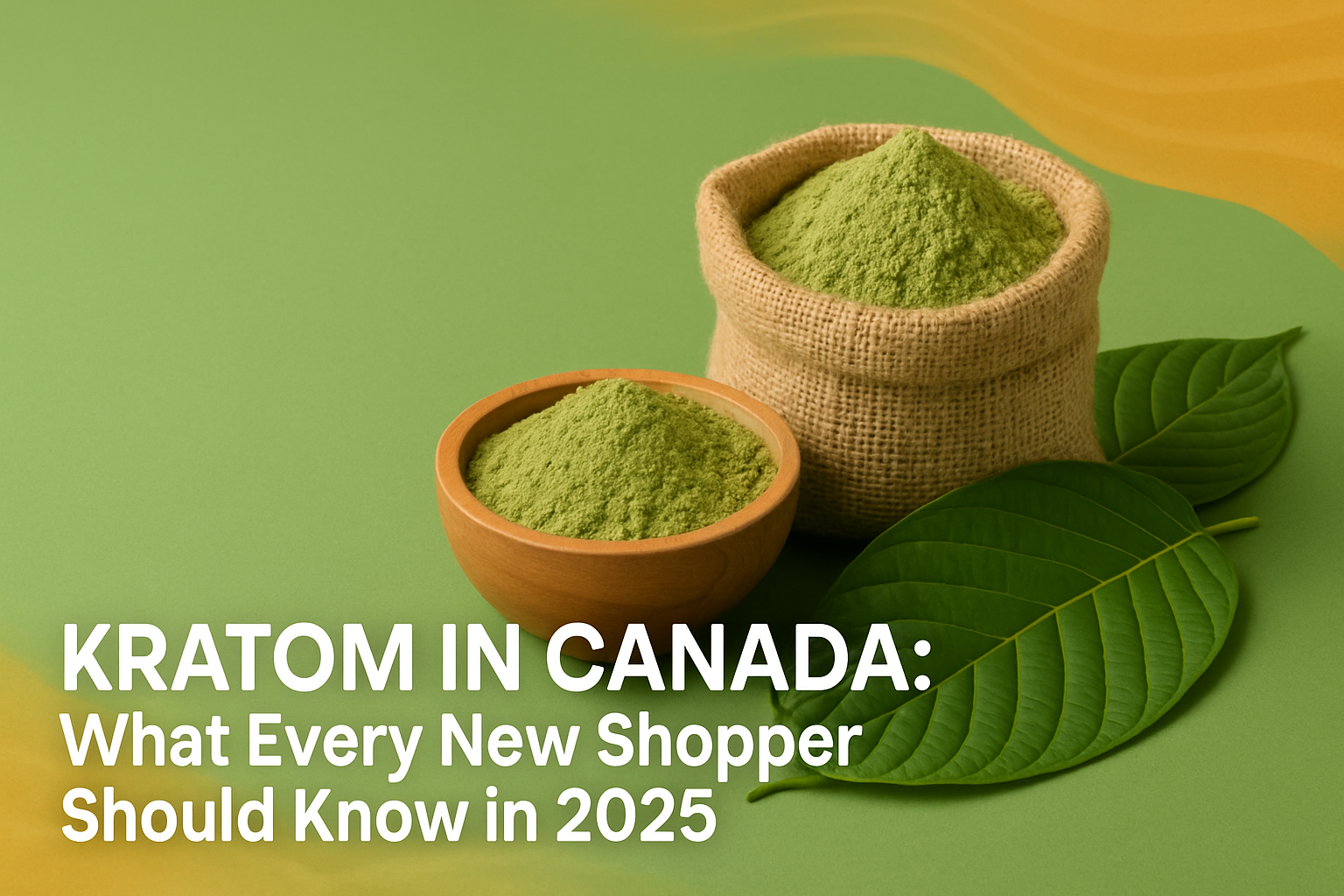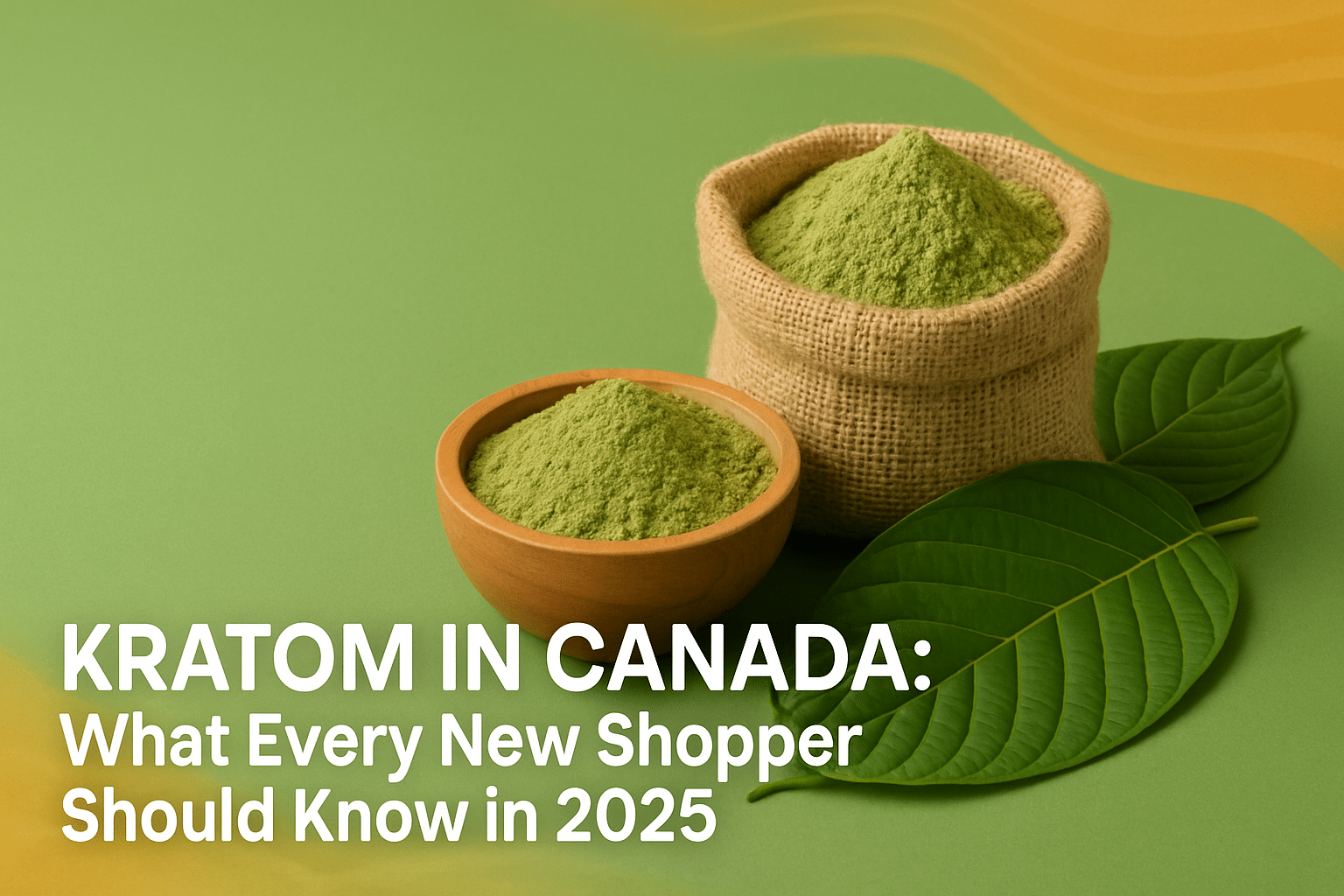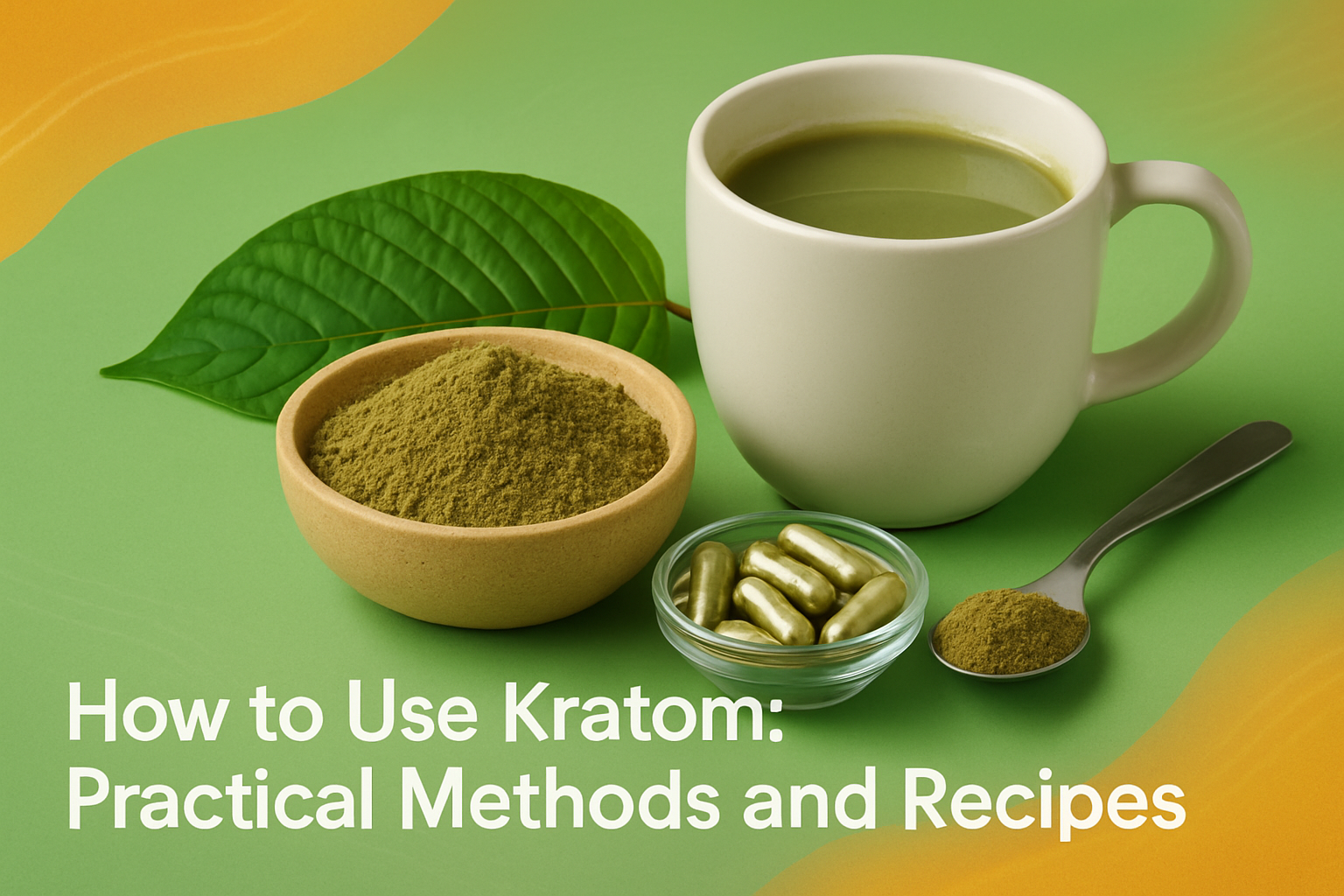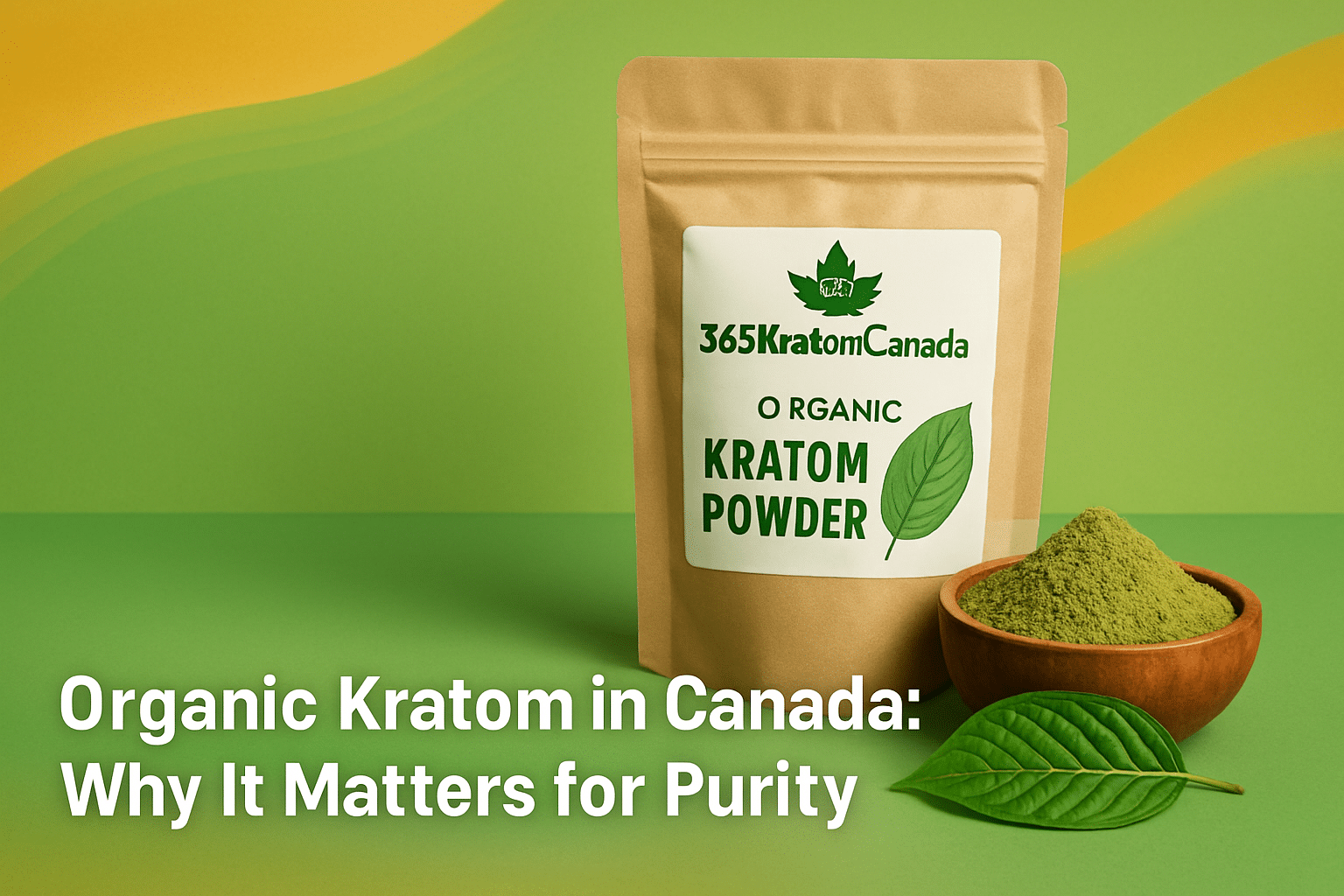
The Canadian kratom market has experienced significant growth, with regulatory uncertainty creating unique challenges for new shoppers. As 2025 unfolds, understanding kratom in Canada requires navigating complex legal frameworks, quality standards, and vendor selection criteria that differ substantially from other markets.
Whether you’re exploring kratom for research purposes or seeking botanical alternatives, the Canadian landscape presents both opportunities and pitfalls. This comprehensive guide addresses what every new shopper should know about kratom in Canada, from legal considerations to quality testing standards.
Legal Status and Regulations for Canadian Kratom Shoppers
Current Legal Framework Across Canadian Provinces
Kratom occupies a complex legal position in Canada that new shoppers must understand before making purchases. Kratom remains unregulated for human consumption as of 2025, but it’s not explicitly banned nationwide. However, provincial variations mean buyers should verify local regulations before ordering.
The absence of federal prohibition doesn’t guarantee unrestricted access. Some provinces have implemented their own restrictions or guidelines that affect how kratom can be sold, marketed, and distributed. New shoppers should research their specific provincial laws to ensure compliance.
Understanding the best kratom vendors Canada 2025 requires recognizing these legal nuances. Reputable vendors typically display clear disclaimers about their products’ intended use and regional shipping restrictions.
Health Canada’s Position and Regulatory Updates
Health Canada’s stance significantly impacts how kratom can be legally purchased and marketed across the country. The agency has not approved kratom for medicinal use since 2023 due to insufficient safety data, creating important implications for buyers.
This regulatory position means that vendors cannot make health claims about their kratom products. Buyers should avoid products making medicinal promises, as these likely violate Health Canada guidelines and may indicate unreliable suppliers.
The regulatory landscape continues evolving, with Health Canada monitoring international research and safety reports. New shoppers should stay informed about potential regulatory changes that might affect future purchases or possession.
What Legal Compliance Means for Consumers
Legal compliance extends beyond simply purchasing kratom legally. Understanding vendor disclaimers and product labeling helps buyers make informed decisions while protecting themselves from potential legal issues.
Products labeled “Not for Human Consumption” may still be seized if intended for ingesting, according to enforcement interpretations. This creates a gray area that new shoppers must navigate carefully when selecting products and vendors.
Compliance also involves understanding import regulations if purchasing from international suppliers. Canadian customs authorities may inspect packages, and buyers should ensure their purchases align with current importation guidelines.
Understanding Kratom Quality and Lab Testing Standards
Why Lab-Tested Products Matter for Safety
Quality assurance represents one of the most critical factors when purchasing kratom in Canada. Without mandatory federal oversight, Health Canada doesn’t mandate quality control, increasing contamination risks during importation and processing.
Professional lab testing identifies contaminants like heavy metals, pesticides, and harmful bacteria that can pose serious health risks. Reputable vendors invest in comprehensive testing to ensure their products meet safety standards, even without regulatory requirements.
Third-party laboratory certification provides additional credibility and transparency. When evaluating kratom quality testing Canada standards, buyers should prioritize vendors who provide detailed certificates of analysis (COAs) for each product batch.
Essential Testing Parameters and Certifications
Comprehensive lab testing should cover multiple parameters to ensure product safety and potency. Key testing areas include heavy metals (lead, mercury, cadmium), microbials (salmonella, e.coli, yeast), pesticides, and alkaloid profiles.
Alkaloid testing determines the concentration of kratom’s active compounds, helping buyers understand potency and consistency between batches. This information proves especially valuable for new users determining appropriate starting dosages.
Legitimate testing facilities are often accredited by organizations like ISO/IEC 17025, providing additional assurance of testing reliability and accuracy. Buyers should verify that vendor lab reports come from recognized, independent testing facilities.
Reading and Interpreting Lab Reports
Understanding lab reports empowers buyers to make informed decisions about product quality and safety. Well-formatted COAs clearly display testing parameters, results, and acceptable limits for each tested category.
Pay attention to testing dates to ensure reports reflect recent batches rather than older samples. Fresh testing typically indicates ongoing quality control rather than one-time testing for marketing purposes.
Look for specific numerical results rather than simple “pass/fail” designations. Detailed results provide transparency about actual contamination levels and alkaloid concentrations, helping buyers assess product quality more accurately.
Safe Shopping Practices for New Canadian Kratom Buyers
Red Flags to Avoid When Selecting Vendors
Identifying unreliable vendors protects new shoppers from poor-quality products and potential legal issues. Vendors lacking lab reports or making medical claims face regulatory scrutiny and should be avoided entirely.
Suspicious pricing represents another warning sign. Extremely low prices often indicate compromised quality, inadequate testing, or questionable sourcing practices. Premium kratom requires careful processing and testing, reflected in fair market pricing.
Avoid vendors with poor customer service, unclear return policies, or limited contact information. Legitimate businesses maintain professional communication standards and provide clear terms of service for their customers.
Verifying Vendor Credentials and Customer Reviews
Thorough vendor research helps buyers identify trustworthy suppliers committed to quality and compliance. Start by checking for business registration, physical addresses, and professional website design that reflects legitimate operations.
Unauthorized kratom products lack proper Natural Product Numbers (NPN) or Homeopathic Drug Numbers (DIN-HM), though kratom’s unregulated status means these identifiers may not apply. However, understanding regulatory compliance identifiers helps buyers assess vendor legitimacy.
Customer reviews provide valuable insights into product quality, shipping reliability, and customer service standards. Look for reviews across multiple platforms and pay attention to specific comments about product effects and vendor responsiveness.
Quick Vendor Evaluation Checklist:• Third-party lab testing certificates
• Clear product labeling and disclaimers
• Professional customer service
• Transparent shipping and return policies
• Positive customer reviews across platforms
• Established business presence and contact information
Understanding Product Categories and Strain Types
Kratom varieties offer different characteristics that appeal to various user preferences and purposes. Red vein strains typically provide relaxing effects, while white veins offer more energizing properties. Green veins generally balance both characteristics.
Regional kratom strains Canada markets often feature names like Maeng Da, Bali, and Indo, referring to traditional growing regions. However, strain names can be inconsistent between vendors, making alkaloid testing more reliable than strain designations alone.
New buyers should start with single-strain products before experimenting with blended formulations. This approach helps identify personal preferences while minimizing variables that might affect individual responses to different kratom types.
Practical Buying Guide: Dosage, Storage, and First Purchase Tips
Starting Dosage Guidelines for New Users
Beginning with conservative dosages protects new users from overwhelming experiences while helping identify optimal amounts for individual needs. Most experts recommend starting with 1-2 grams for initial trials, gradually increasing if needed.
Starting kratom dosage Canada recommendations suggest waiting at least 6-8 hours between doses to assess effects properly. Individual tolerance varies significantly, making personal experimentation necessary within safe parameters.
Keep detailed records of dosage amounts, timing, and effects to identify patterns and optimal ranges. This documentation proves valuable for adjusting future purchases and understanding personal response patterns.
Proper Storage Guidelines for Product Freshness
Correct storage preserves kratom quality and extends shelf life significantly. Store kratom in cool, dry locations away from direct sunlight, which can degrade alkaloid content over time.
Airtight containers prevent moisture absorption and contamination while maintaining freshness. Glass jars or food-grade plastic containers with tight-fitting lids work well for long-term storage needs.
Kratom storage guidelines recommend avoiding refrigeration, which can introduce moisture and cause clumping. Room temperature storage in controlled humidity environments provides optimal preservation conditions.
Building Relationships with Reliable Suppliers
Establishing relationships with trustworthy vendors provides long-term benefits including consistent quality, better customer service, and potential loyalty discounts. Communication with suppliers helps buyers stay informed about new products and quality improvements.
Many established vendors offer educational resources, dosage guidance, and responsive customer support that proves valuable for new users. These relationships often result in better overall experiences and reduced purchasing risks.
Consider vendors who demonstrate genuine interest in customer education rather than simply processing orders. Companies like 365 Kratom Canada focus on building trusted communities through quality products, educational content, and personalized service approaches.
Pricing Expectations and Value Considerations in the Canadian Market
Understanding Fair Market Pricing
Kratom pricing in Canada reflects various factors including import costs, testing expenses, and regulatory compliance measures. Premium products typically cost more due to extensive quality control and third-party laboratory testing requirements.
Expect to pay between $15-40 per ounce for quality kratom, with bulk purchases often providing better per-unit pricing. Significantly lower prices may indicate compromised quality or inadequate testing standards.
Compare pricing across multiple vendors while considering testing standards, shipping policies, and customer service quality. The cheapest option rarely provides the best overall value when factoring in quality and reliability.
Evaluating Bulk Purchase Options
Bulk purchasing can reduce per-unit costs while ensuring consistent supply from trusted vendors. However, new users should avoid large quantities until establishing personal preferences and optimal dosages.
Many vendors offer sample packs or variety bundles that allow buyers to test different strains and formulations. These options provide better value than individual purchases while minimizing commitment to single products.
Consider storage requirements and product freshness when evaluating bulk options. Purchase quantities that you can properly store and use within reasonable timeframes to maintain quality.
Frequently Asked Questions
Is kratom legal to buy in Canada in 2025?
Is kratom legal Canada 2025 remains a complex question with no simple answer. Kratom exists in a legal gray area where it’s not explicitly banned federally, but Health Canada hasn’t approved it for human consumption. Provincial regulations may vary, so buyers should verify local laws before purchasing.
How do I verify if a kratom vendor provides legitimate lab testing?
Look for third-party certificates of analysis (COAs) that include specific testing parameters, numerical results, and recent testing dates. Legitimate vendors provide lab reports from accredited testing facilities and display them prominently on their websites or upon request.
What’s the difference between kratom strains available in Canada?
Regional kratom strains Canada vendors offer typically fall into red, white, or green vein categories based on processing methods rather than actual leaf vein colors. Red strains tend toward relaxing effects, whites are more energizing, and greens provide balanced characteristics.
How should new users determine appropriate kratom dosages?
Safe kratom purchase tips include starting with 1-2 grams and waiting 6-8 hours to assess effects before adjusting dosages. Individual tolerance varies significantly, making gradual experimentation within conservative limits the safest approach for new users.
What storage methods best preserve kratom quality?
Store kratom in airtight containers at room temperature, away from direct sunlight and moisture. Avoid refrigeration, which can introduce humidity and cause clumping. Proper storage maintains quality and alkaloid potency for extended periods.
How can I identify reliable kratom suppliers in Canada?
Kratom supplier reviews Canada buyers should examine focus on vendors providing lab testing certificates, clear product disclaimers, professional customer service, and positive customer feedback across multiple platforms. Avoid vendors making health claims or offering suspiciously low prices.
What should I expect to pay for quality kratom in Canada?
Quality kratom typically costs $15-40 per ounce, with bulk purchases often providing better value. Extremely low prices may indicate compromised quality or inadequate testing, while premium pricing usually reflects comprehensive quality control measures.
Conclusion
Successfully navigating kratom purchases in Canada requires understanding legal complexities, quality standards, and safe shopping practices. The unregulated nature of kratom in Canada places responsibility on buyers to research vendors, verify lab testing, and understand provincial regulations.
Quality testing, vendor credibility, and proper storage represent essential factors for safe and satisfactory kratom experiences. New shoppers who prioritize education, start conservatively, and build relationships with reputable suppliers typically achieve better long-term results.
Ready to explore quality kratom options? 365 Kratom Canada offers lab-tested, premium kratom products with comprehensive quality assurance and educational support for Canadian customers.



